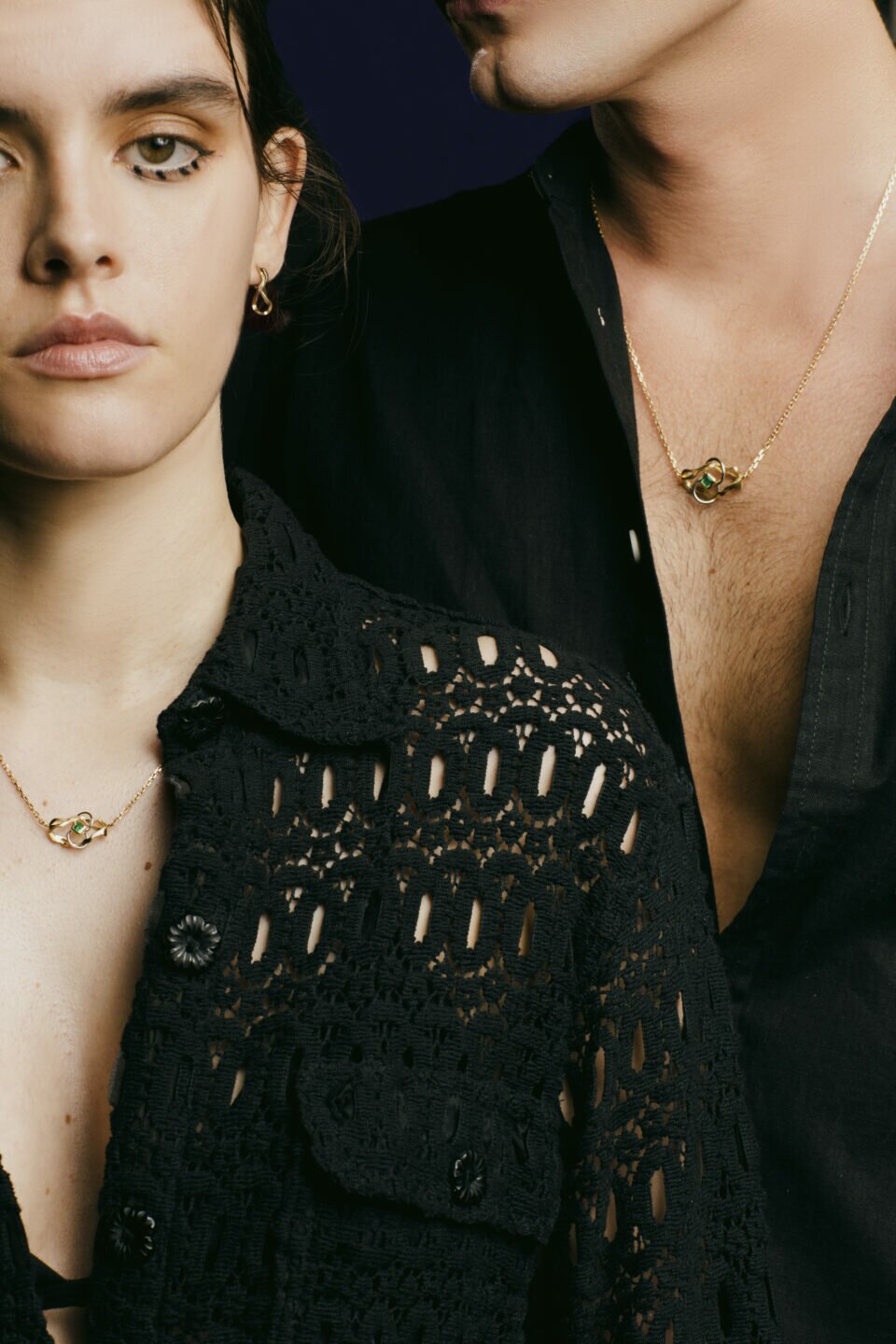The story of Milamore begins with the love shared between a boy and his grandmother. The boy in question, George Inaki Root, tattooed her name on his chest and named his jewellery brand after her by fusing her name Milagros (Spanish for “miracle”), with the word amore, Italian for love. Establishing a brand embodying the meeting of cultures in 2019, the self-taught Japanese-Filipino jewellery designer’s origins and life experiences are reflected in his creations.
Born in Manila in 1987, he spent his teenage years in Japan and is now based in New York, where he designs jewels that are then manufactured in Japan. Forged from 18k gold and featuring ethically-sourced natural stones, the jewellery pieces are made by multi-generational families of artisans located in various ateliers in Tokyo and Yamanashi prefecture, which have strong links to Milamore’s cofounder Azusa Yamato, who stems from a long line of respected jewellers.
Japan’s rich culture and heritage is a constant source of inspiration for the brand. Its latest collection, Kintsugi, is based on the Japanese art of repairing broken pottery with lacquer resin mixed with powdered gold, silver or platinum. This ancient craft emphasises cracks and honours the object’s unique history; it is regarded as a symbol of resilience.
Creating beauty out of destruction as a reminder that all people have the strength to overcome their brokenness, the ancient technique’s seams become the designs themselves in Root’s jewellery, as if the cracked ceramic has dropped off, with only the jagged lines of gold remaining. Root explains his Kintsugi series, “I want people to be brave and accept who they are by wearing it. We live in a world where you can easily Photoshop your face and make a completely different persona, even if you are already beautiful. I love people who are unapologetic and authentic. Nobody is perfect and we shouldn’t be perfect. Finding beauty in the flaw is beautiful to me.”
Despite low profit margins due to high labour costs in Japan, Root insists on championing Japan’s often overlooked yet time-honoured jewellery-making savoir-faire. “Supporting Japan’s jewellery industry is innovative because making jewellery in Japan is not common, but I believe in Japanese craftsmanship and I love communicating with my artisans,” says Root. Based on the Japanese concept of omotenashi, a wholehearted approach to hospitality that goes above and beyond expectations, every piece is made and sold with painstaking care and attention. “The hospitality in Japan is top class,” Root states. “And you don’t have to tip! So I tell my retail team that I want to give my clients a friendly but luxurious omotenashi service. The new luxury is niche and low key. I have a showroom in Tokyo and I designed it like my New York City apartment. I want customers to shop and feel like they are hanging out in my living room.”
Raised in culturally-diverse Philippines by his grandmother while his mother worked in Japan to support the entire family, Root moved to Japan at the age of nine to live with his mother for the first time. “My mum used to clean hotels during the day and work at a bar at night when I was a teenager. She influenced me to work hard and stay true to myself. I definitely didn’t grow up in a wealthy family with privilege. My background and experience are very different from other jewellers. I didn’t go to school for arts or design, I didn’t have financial support. I had to build my own career and work with investors. That made me confident and ambitious. It’s really fun to establish my own brand from scratch,” he shares.
Moving from Japan to New York in 2014, he launched his own PR and branding agency and worked with clients such as Chanel, Furla and Giorgio Armani Beauty for the Japanese market. His experience in the fashion industry influences the way he styles his jewellery today and he is unafraid of making bold choices. For instance, he pairs yellow and white gold together, an uncommon choice as most people typically prefer sticking to one metal colour.
Root is currently developing a special stone setting for his Diamond Braille collection, in which diamonds replace the tactile dots used to represent letters and words. “I designed my diamond Braille ring with the word ‘Manifest’ as a reminder to myself. My experiences have made me strong and independent. I’m really glad that people are resonating with my stories.” There are also other Diamond Braille plate necklaces and bracelets with words like “Amore”, “Gratitude”, “Self Love” and “Hope”. “I’d like to take Milamore to the next level as an international luxury brand with Japanese-Filipino heritage,” he concludes. “I prefer to be recognised by my work, not my gender, race or appearance. Yes, my heritage is Japanese-Filipino, but Milamore is about being universal.”





